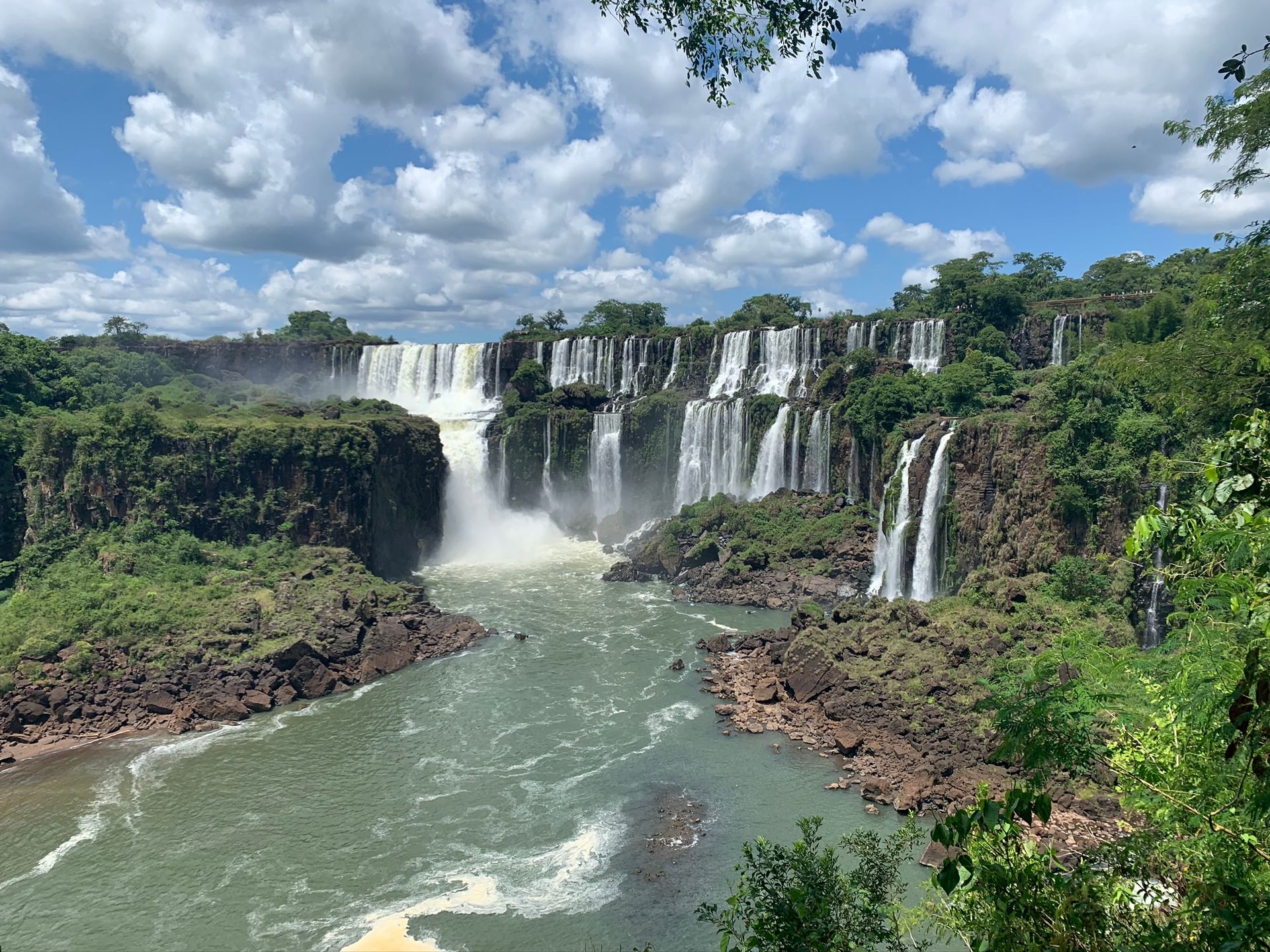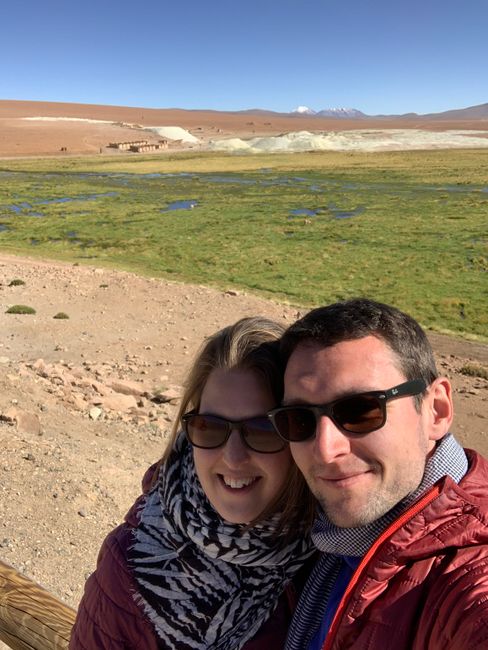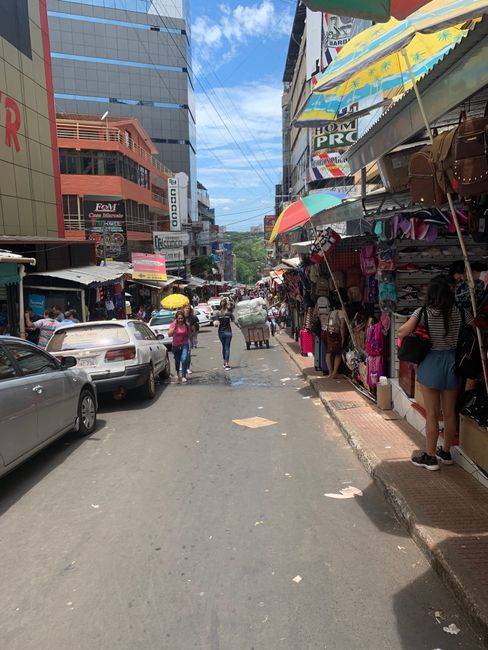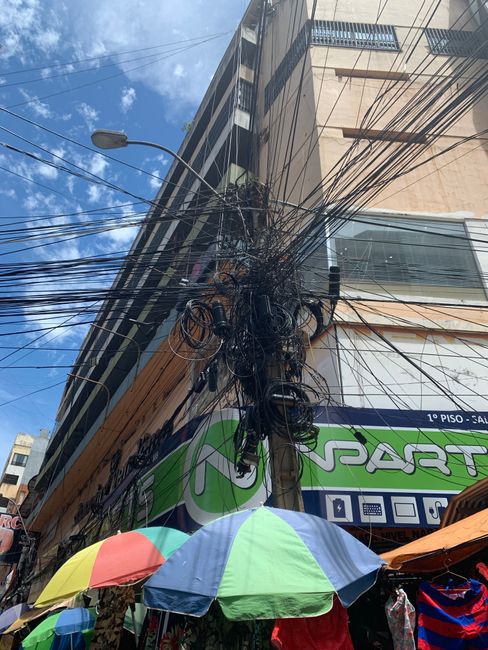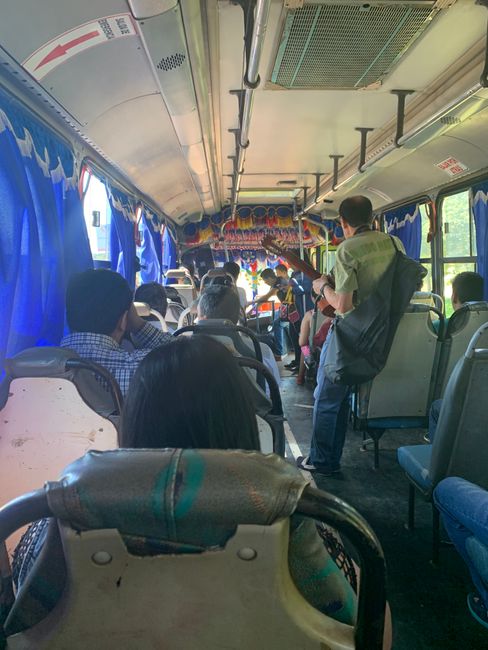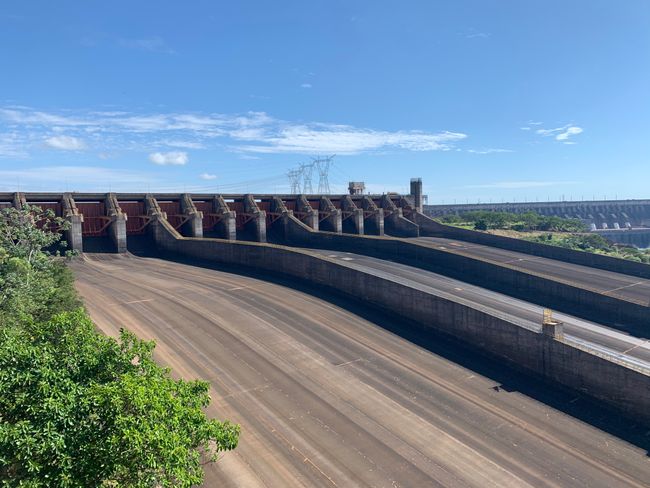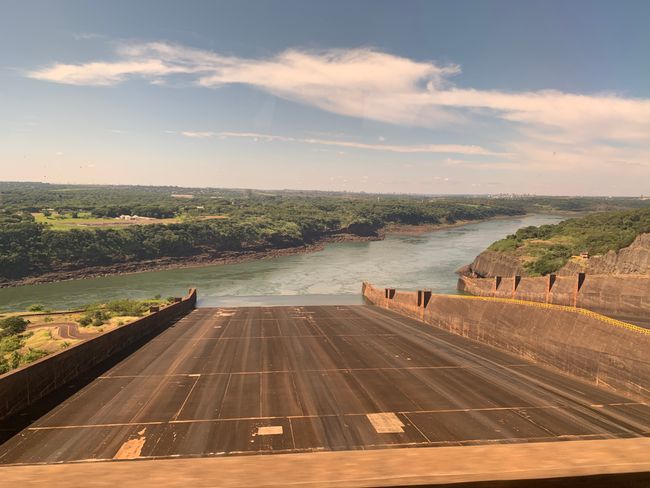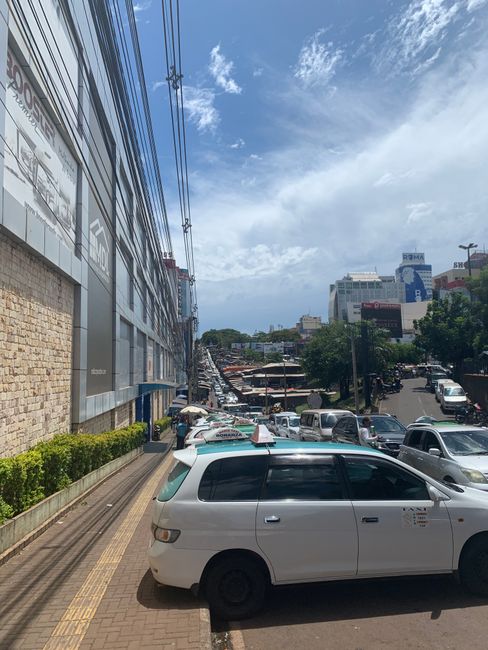From natural spectacle to shopping paradise
Được phát hành: 15.02.2020
Đăng ký tin
The Iguazu Falls and the region around the three-country corner of Argentina, Brazil, and Paraguay are a true paradise for passport stamp collectors. Just the trip to the Brazilian side brought us four new stamps (Argentina exit, Brazil entry, Brazil exit, and Argentina entry). But that wasn't the end of it for the day.
After returning from Brazil, we picked up our backpacks from the hostel and set off again. Next destination: Ciudad del Este in Paraguay! Since the only connection there is by land through Brazil, we were starting to get worried about space in our passports. After leaving Argentina (with stamp number 5 that day), the bus driver surprisingly didn't stop at the Brazilian border, but continued without stopping. Unfortunately, the same was true at the Paraguayan border, we also drove through without stopping. A short Google search later, we learned that the bus drivers at this border crossing like to just drive through, but it can cause problems and fines for foreigners when leaving. So while we saved space in our passports, we faced the next challenge.
Nevertheless, we first dropped off our things at the hotel and got a small overview of the city. And it was not quite as we had expected. Everywhere before, the South Americans had told us that Paraguay is almost untouched by tourism and nobody goes there. Here in Ciudad del Este, however, it's a bit different. Especially near the border with Brazil, there are shopping malls, electronics markets, and small market stalls lined up one after the other. You can buy everything here from brand-name clothing (whether real or fake, who knows...) to cheap unknown brands. But above all, there is everything that runs on electricity (from notebooks and smartphones to headphones and kitchen appliances). However, it must also be mentioned that Ciudad del Este enjoys a special status and is not representative of Paraguay. Here, foreigners do not pay taxes on all these imported goods, and so it is a shopping paradise for Argentinians and Brazilians, who come here in large numbers for day shopping trips. Of course, we also got an overview of the shopping malls and strolled around a bit. We were particularly impressed by a huge "China-Import" shop. Here, not only electronics were available, but also the world's leading brands in all conceivable product categories (from Milka to Schwartau, we also recognized many German brands). Since our arrival day in Ciudad del Este coincided with the halfway point of our journey, we treated ourselves to a large bag of Haribo to celebrate Germany.
After the excursion into the shopping world, we decided to tackle our stamp problem once again. So we went back to the border and tried to officially enter. This ultimately went surprisingly smoothly and we were given the necessary entry stamp without further questions. So we got rid of this worry and could enjoy the evening relaxed. The next day, we had to get up early again because we wanted to visit Itaipu Binacional, the second-largest dam in the world. Once again, it was very impressive to see what mankind can build and how advanced the technology was already in the 1970s when the dam was built. At the same time, you could also feel the pride of the Paraguayans in this structure. However, considering that the dam covers 90% of Paraguay's (and 20% of Brazil's) energy needs, it is quickly understandable and the relevance for the small Paraguay becomes obvious.
Since Ciudad del Este does not offer any other major tourist highlights and, to be honest, did not really invite us to linger, we used it more as a stopover on our way to Paraguay. In addition, I (Tim) was able to replace my broken headphones and we were able to replenish our small electronic needs like batteries. Now we are fully equipped for the further journey towards Carnival. But more about that next time...
Đăng ký tin
Trả lời
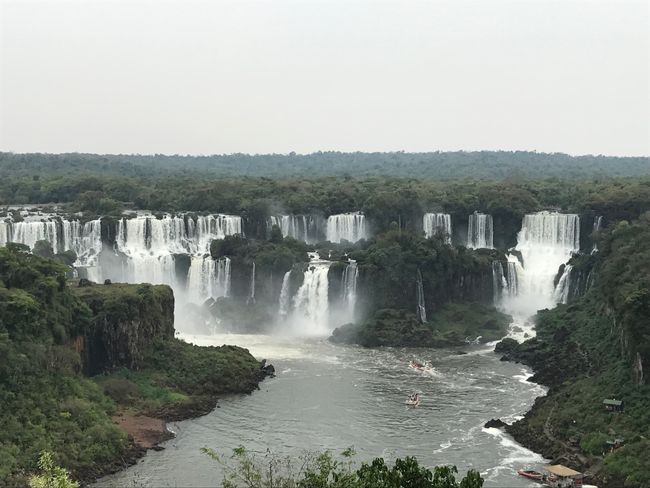
Báo cáo du lịch Paraguay
